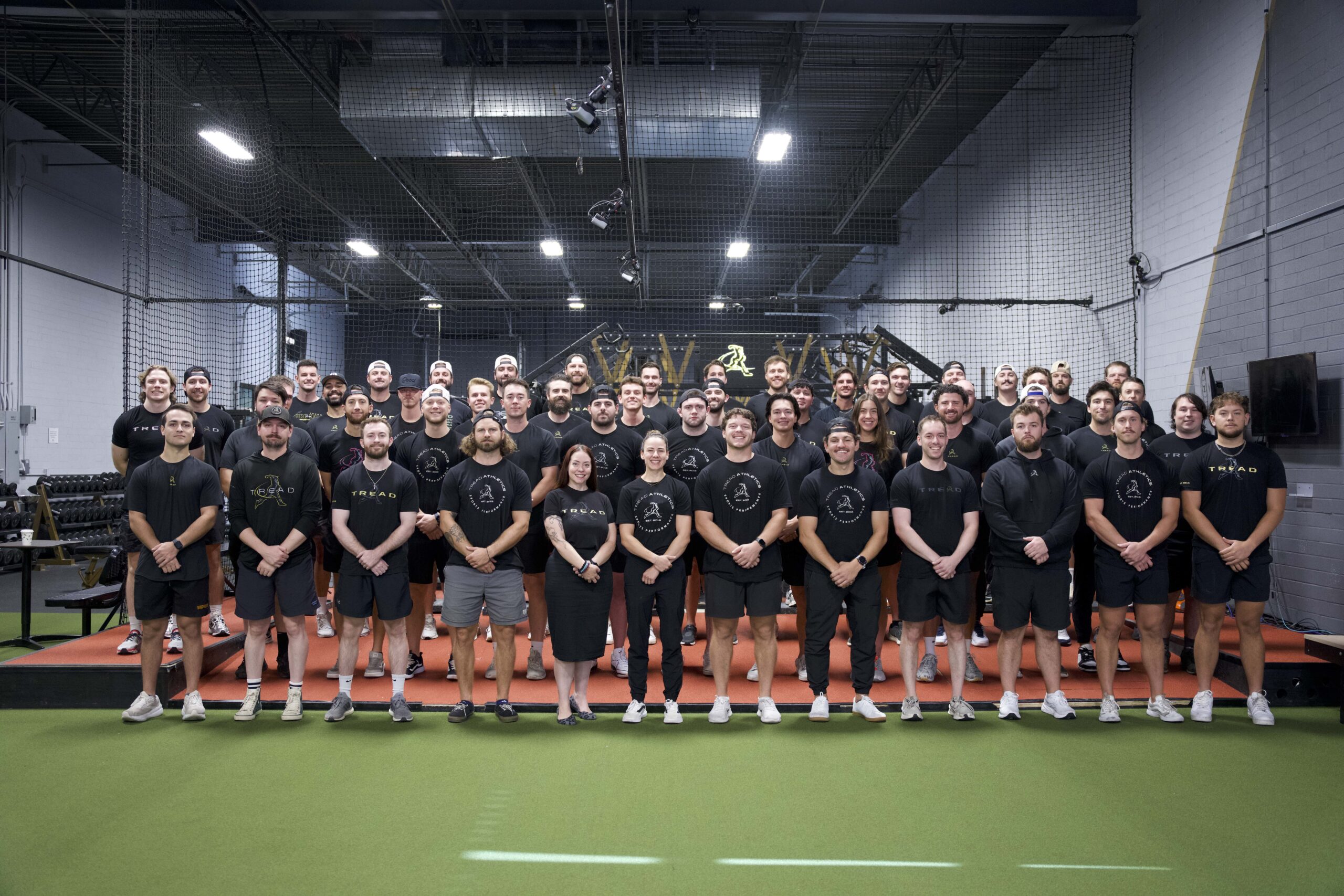Have you ever wanted to throw a baseball just a little harder? Even if it’s just for one throw to prove to yourself that have more velocity in the tank? If you’re reading this, I’m sure that the answer is yes.

This article is going to highlight some research where the participants in the study demonstrated an increase throwing performance by about 3% just by doing a couple of vertical jumps a minute before they threw.
An acute increase of 3% would mean that your 85mph fastball could bump up to 87.5mph or if you can throw 90 mph, you’d be touching 92.7 mph. Both of these increases would be great. If you’re wondering if it works then keep reading.
The Scientific Study
Here is the study: Acute Effect of Countermovement Jumping on Throwing Performance in Track and Field Athletes During Competition. G.P. Karampatsos & G. D Terzis (2017)
These researchers were looking into how to leverage something call Post Activation Potentiation (PAP) into real results in a real competition for these track and field athletes.
With the proper implementation, PAP can serve as a momentary “power boost” allowing your muscles to crank out more force following what they call a “conditioning activity” which in this case were the 3 vertical jumps.
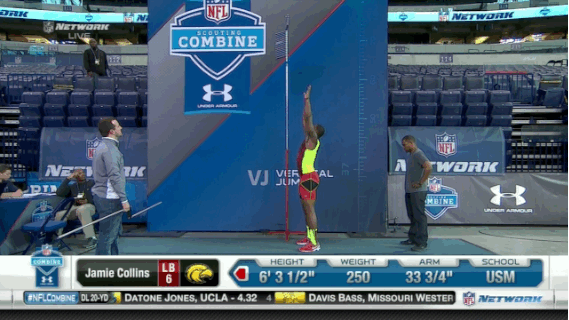
Most of the research around PAP has used squat racks so that athletes can perform a conditioning activity like a squat with a high percentage of their 1RM or an isometric quarter squat against an immovable load for 5 to 10 seconds.
Both of these conditioning activities can excite/prime/potentiate your muscles without causing too much fatigue. If athletes instead performed a set of 20 squats or executed a 1-minute isometric hold the potentiating effects would be masked by the fatigue that these activities resulting in a decrease in performance.
While having a squat rack, barbell and lots of weights can help induce an acute increase in power these tools aren’t commonly found in too many, if any, bullpens around the world.
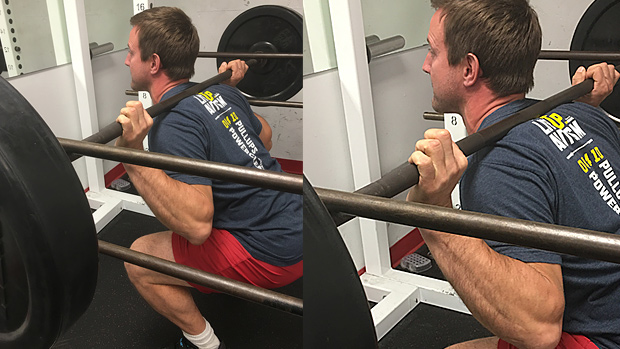
The same holds true for tracks that host meets. For this reason, these authors set out to see if something more practical like countermovement jumps could produce similar results.
Jumping as high as you can will also recruit a high number of motor units and muscle fibers.
This is a key element to any successful conditioning activity. However, performing too many jumps like a P90X workout would be too much and bring fatigue to the table and impede any positive outcome.
We won’t go into the deep details around the human physiology of why PAP occurs. If you are interested, check out this nerdy literature review, I did years ago.
What Exactly Happened In This Study?
The design was simple and elegant plus it was used in a real live track meet which is something that you don’t see very often.
One minute prior to their 2nd, 4th and 6th throwing attempts the athletes performed 3 max effort countermovement jumps.
Before their 1st, 3rd and 5th attempts they did not perform any type of conditioning activity other than what they would normally which in most cases was sit and walking around while waiting for their turn, around 8-10 minutes.
Their results demonstrated an overall increase of 3% in the attempts that were preceded with the jumps.
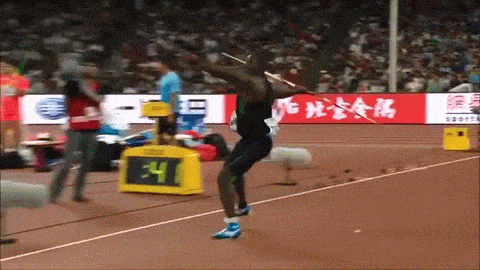
They looked back to previous competitions to see if there was always a performance increase in the 2nd, 4th and 6th attempts but that was not the case.
So, it was this simple yet effective technique of potentiating the muscles of the lower body with three countermovement jumps that caused this increase across the board with these 4 different types of throws.
These authors even performed a pilot project where they got shot putters to try this technique prior to the only their 4th attempt at a national level competition and saw about a 2% increase.
It is hard to argue with these results but before we get too excited about our 3% velo bump we have to take into consideration certain differences between track and field throwing and pitching.
How Much Weight Should We Put Into These Results?
The biggest and most obvious difference is the weight of the object being thrown.
For the men in this study the shot put and hammer are 16lbs which is 50 times heavier than a baseball. These are considered the “heavy throws” in the track and field world.
The “light throws” are the discus and javelin which weigh 4 pounds and 800 grams respectively. So even though they are “light” these two implements are still 12.8 and 5.6 times heavier than a baseball.
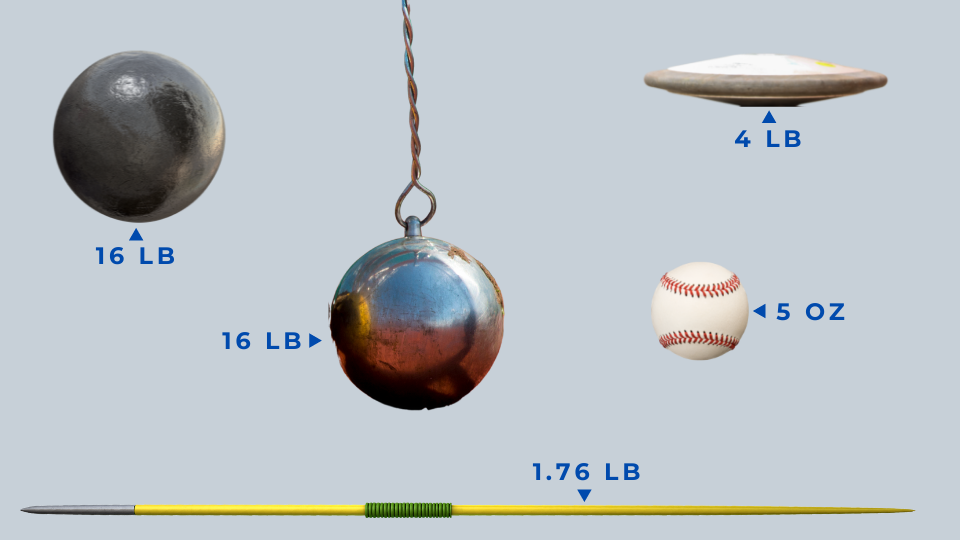
The good news from this study in regards to the weight of the objects being thrown is that there were more improvements with the “light” throws compared to the “heavier.”
The shot putters and hammer throwers saw an increase of about 1.6% whereas the discus and javelin athletes exhibited a 4.6% enhancement. That 4.6% would now take that 85mph fastball and crank it up to 88.9mph.
The Difference In Accuracy
The concept of accuracy is also very different between the two sports. In track you just need to have your throw land in between the lines that are at a 29-degree angle for javelin and 35 degrees for the other 3 throws.
I mention this because a sudden increase in power from your lower half might also have an effect on exactly where that ball crosses the plate even if it is moving 3% faster.
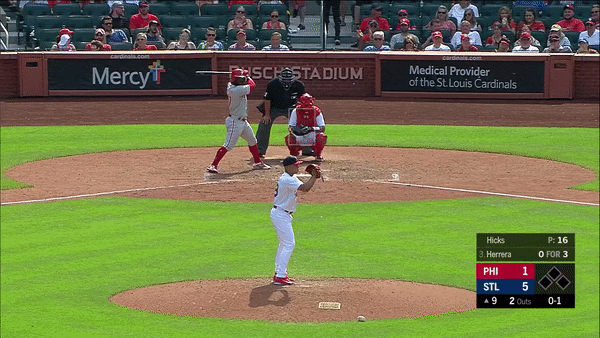
Rest To Work Ratio
Another key difference between the two sports that I want to highlight is that track and field athletes make much fewer throws with a lot more rest between throws than a pitcher on a mound.
They make 6 throws with 8-10 minutes between throws. Nothing like pitching in a real game. So even if we copied what they did in this study we might not see that 3-4.6% increase with every throw throughout an entire inning let alone multiple innings due to fatigue setting in.
But maybe you want to hit a PR with a pulldown (aka javelin throw) or maybe you’re at a tryout where you need to show scouts and coaches that you can touch 90, 91, 92, 93…
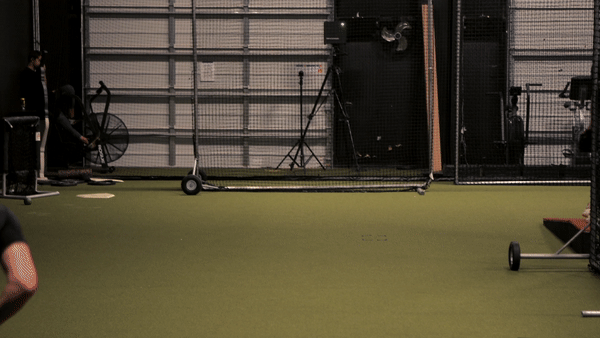
Launch Angle
No, I am not talking about the launch angle that we hear hitting coaches talk about but rather the angle that the object is being thrown.
The name of the game in track and field is distance and because of this there is a significant amount of vertical force that needs to be applied into the ground to produce the optimal trajectory to allow for max distance.
Optimal trajectory is thought to be about a 42-degree launch angle. In contrast, pitchers are throwing off a mound and produce a slight downward angle.
What I’m getting at is that pitchers might not see the same kind of results from a vertical jump due to the specificity of the force vectors at play.
My research study back in 2013 demonstrated that vertical jump performance isn’t as good of a predictor of baseball throwing velocity as the lateral jump due to this concept of specificity.
So maybe performing a couple of lateral-to-medial jumps will help improve pitching performance a little bit more by emphasizing both the frontal plane and a horizontal force vector.
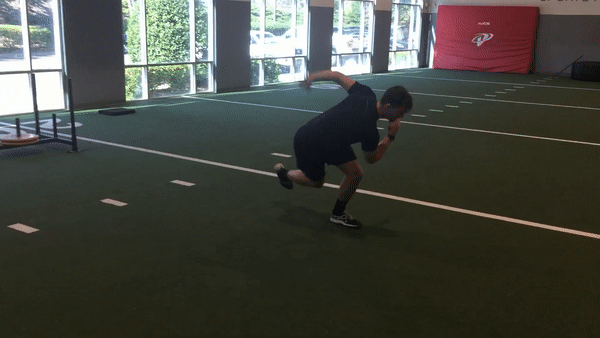
Sounds like a research study for any of you academics out there.
In fact, my original idea for my master’s thesis was to see if an isometric contraction in the frontal plane would have an acute effect on throwing velocity.
This is why I have a literature review of PAP on my site. I didn’t want all that time and effort go to waste so I decided to put it on my web site to add content.
While I am glad that I changed my mind I do think that performing either a couple of lateral jumps or a short isometric contraction in the frontal plane before entering a game or between innings when your teammates are scoring you some runs could have some benefit when it comes to velocity.
Final Thoughts
Finding what works for you might take some trial and error.
PAP is a very personal thing. What might potentiate the muscles of one player might be too much for another and cause fatigue.
In fact, here’s an older article looking at a study that focused on the most popular form of PAP in the game of baseball, the weighted donut in the on-deck circle.
The quick recap is that the donut actually caused a decrease in swing speed. The authors attributed this decrease to the idea that their subjects were not big and strong enough to handle the added weight.
What did work however were a couple of isometric holds at critical points of the swing.
Hopefully this information can be used to help unlock some velocity. Sometimes athletes just need to see what is possible even if it’s just one throw.
Graeme
Editors Note: We have also come up with a quick PAP routine for our remote athletes, shared below. On top of playing with jump variations, priming the upper body and trunk accelerators (pecs, lats and obliques) may yield some benefit as well. Not every athlete seems to need or respond to this routine, while anecdotally others see a 1-2 mph bump on days that they aren’t otherwise feeling “primed” and “fresh.”
Post-Activation Potentiation (PAP), the short-term improvement in performance following a "priming" exercise/routine, is a topic that we have been toying with.
— Ben Brewster (@TreadAthletics) February 15, 2021
There are many variables at play, but we've seen this routine bump certain guys +1-3 mph done 5-10 min pre-throwing. pic.twitter.com/OxFLGvIDHJ


